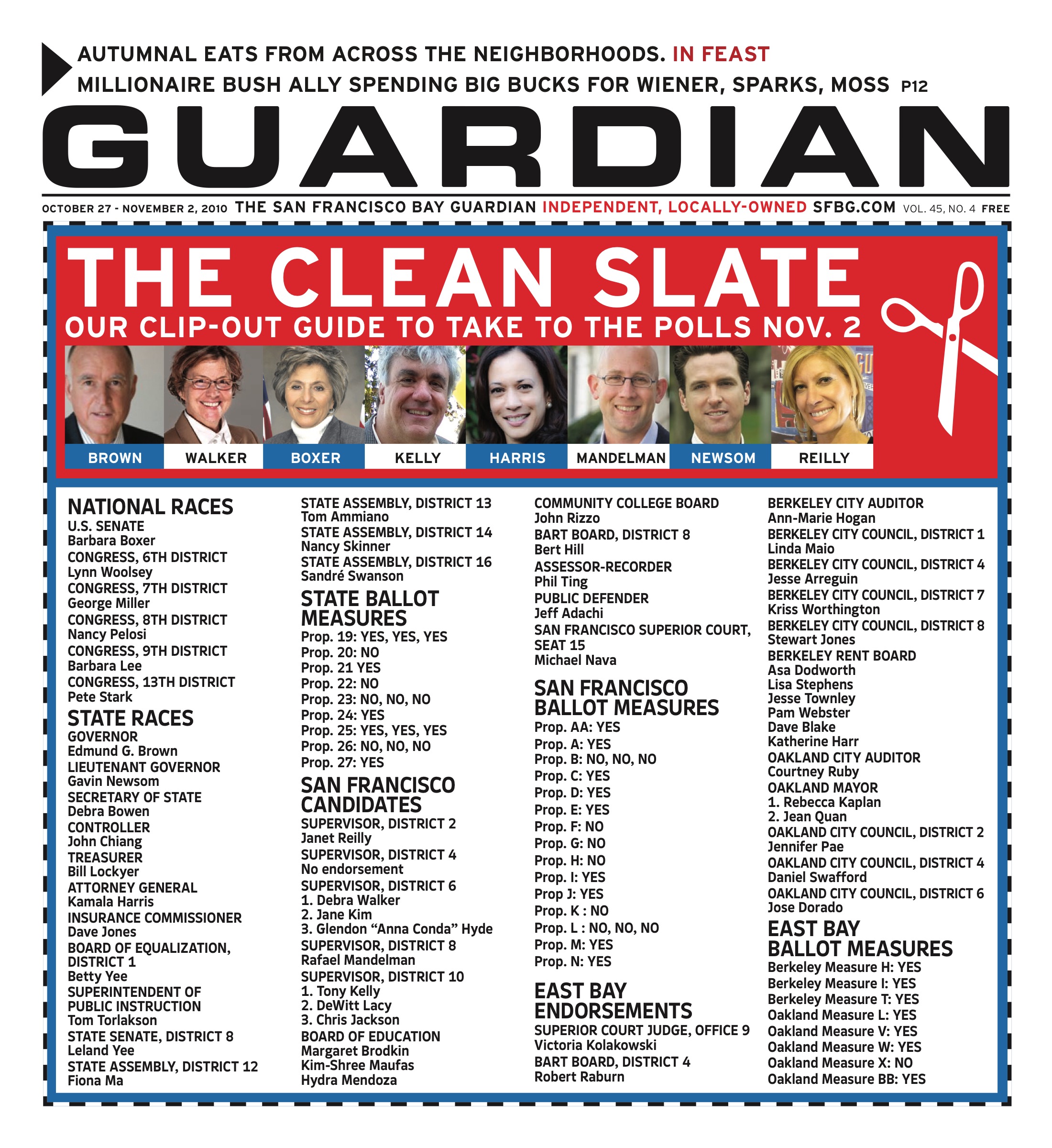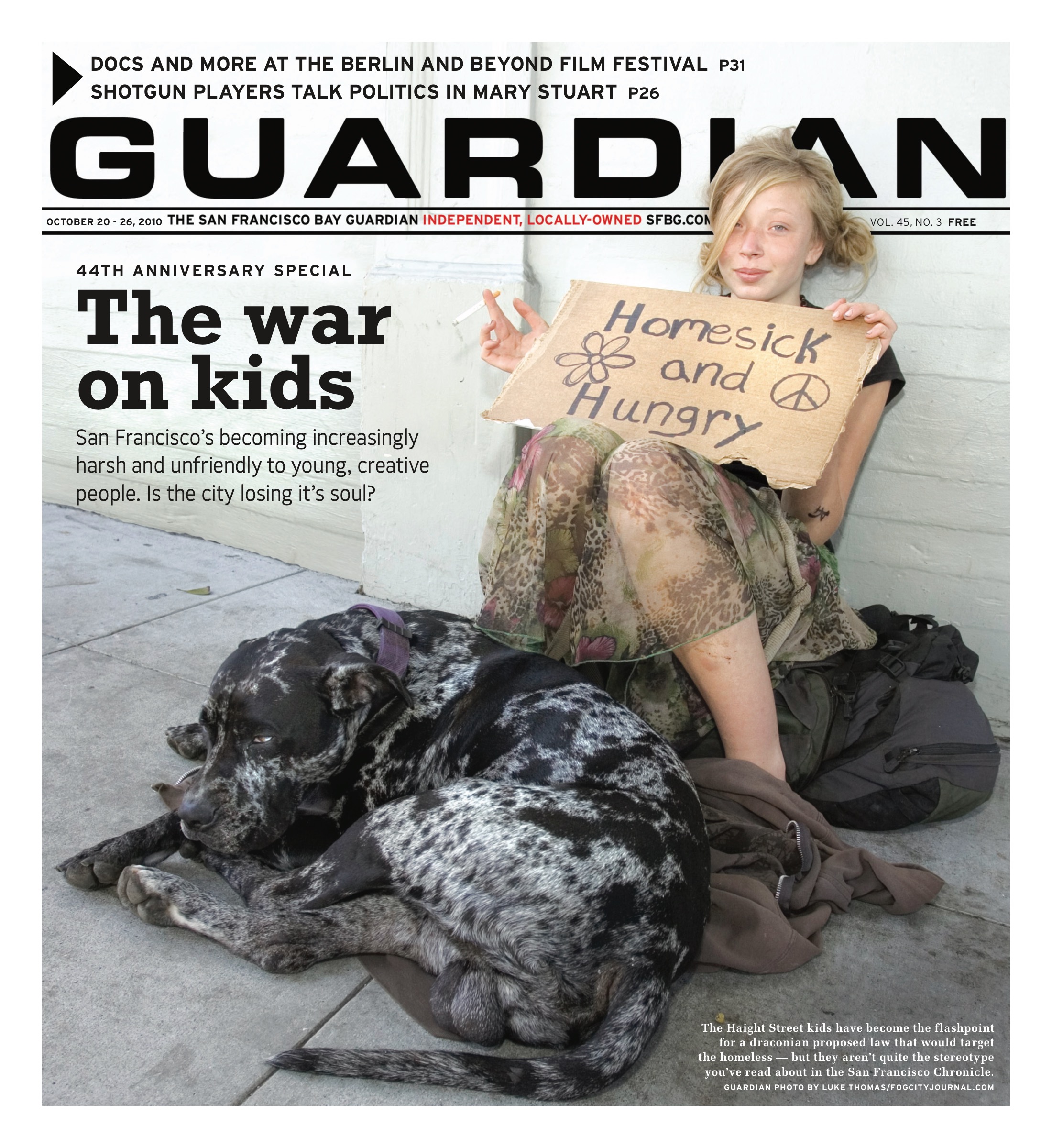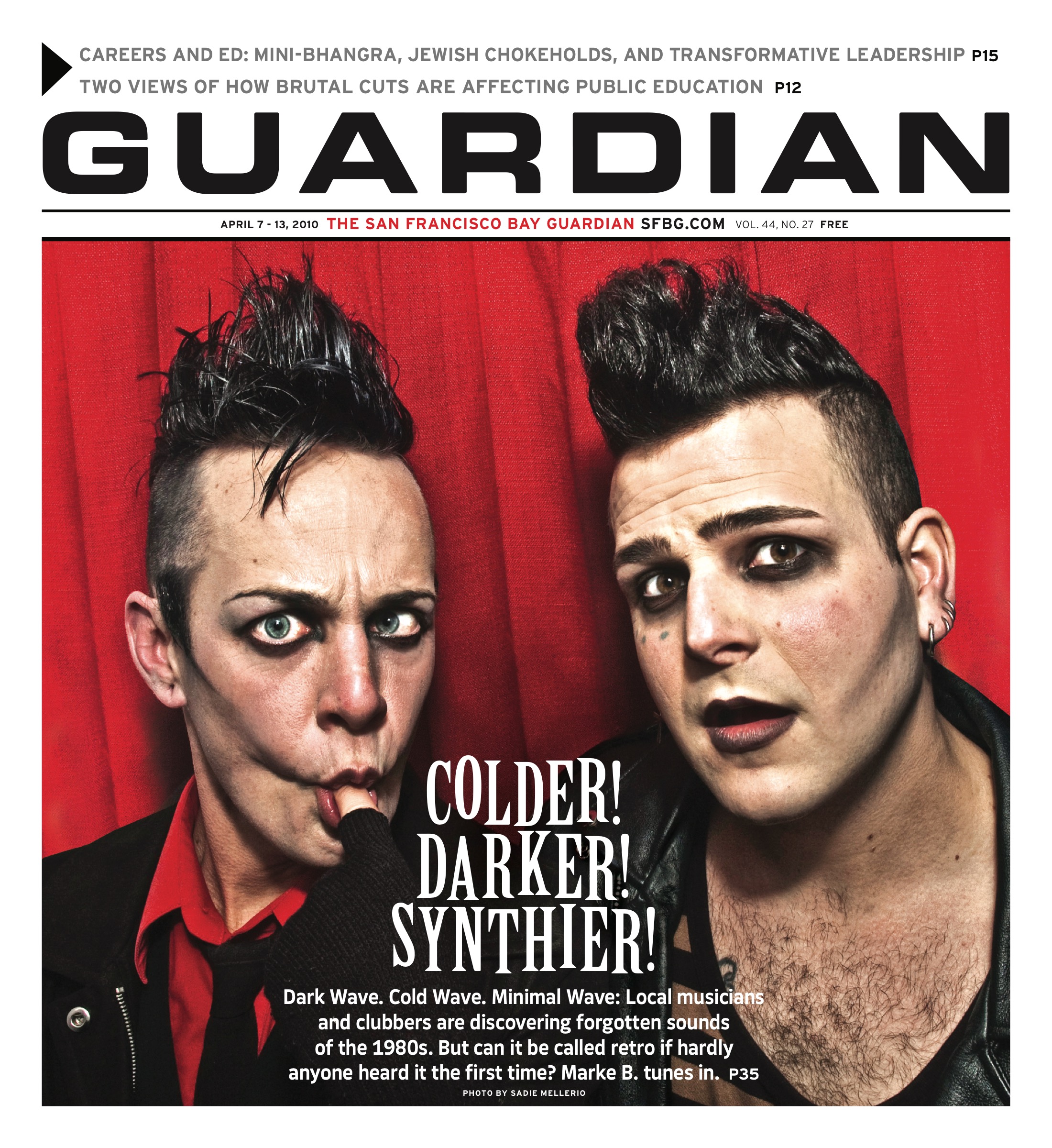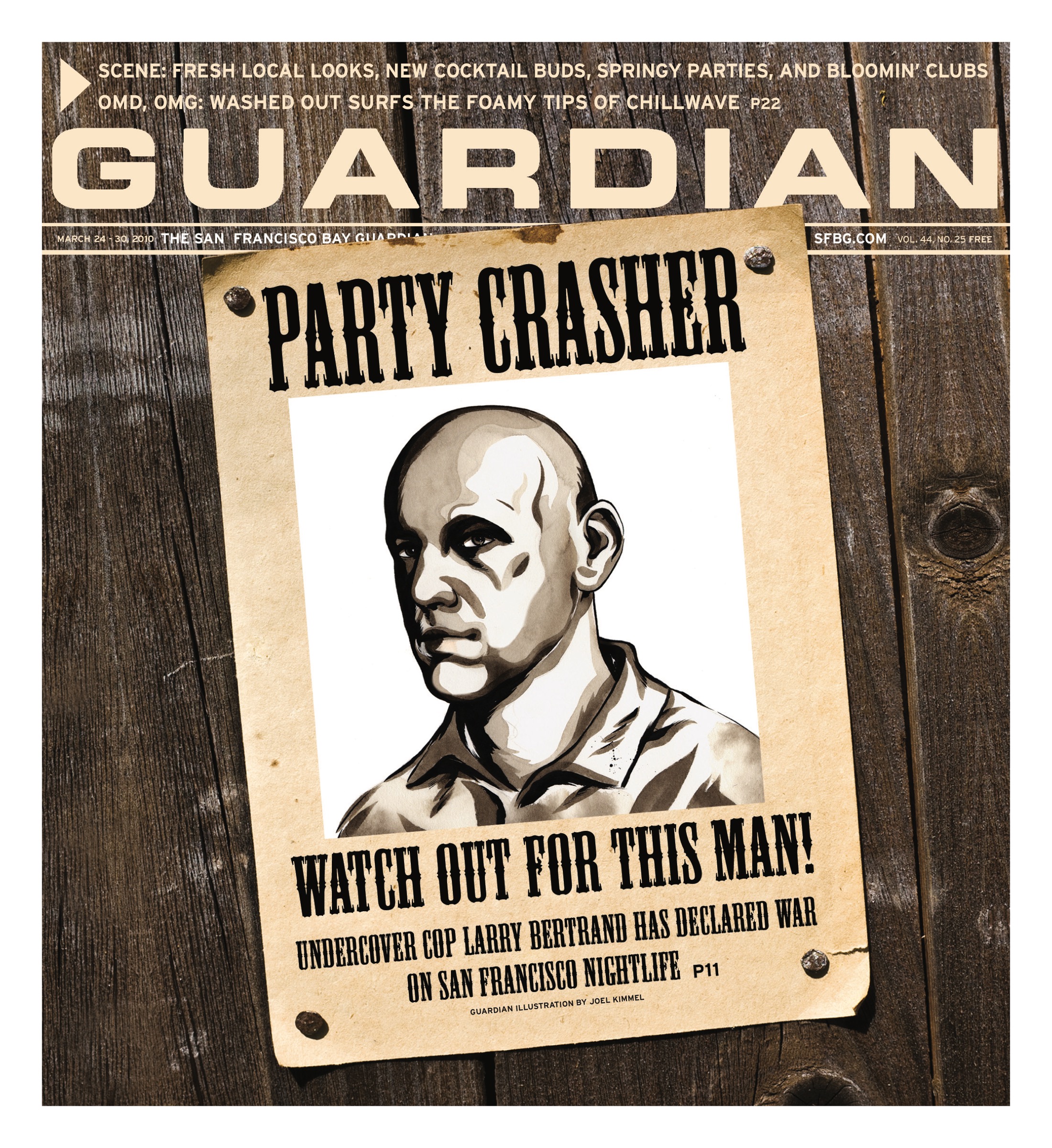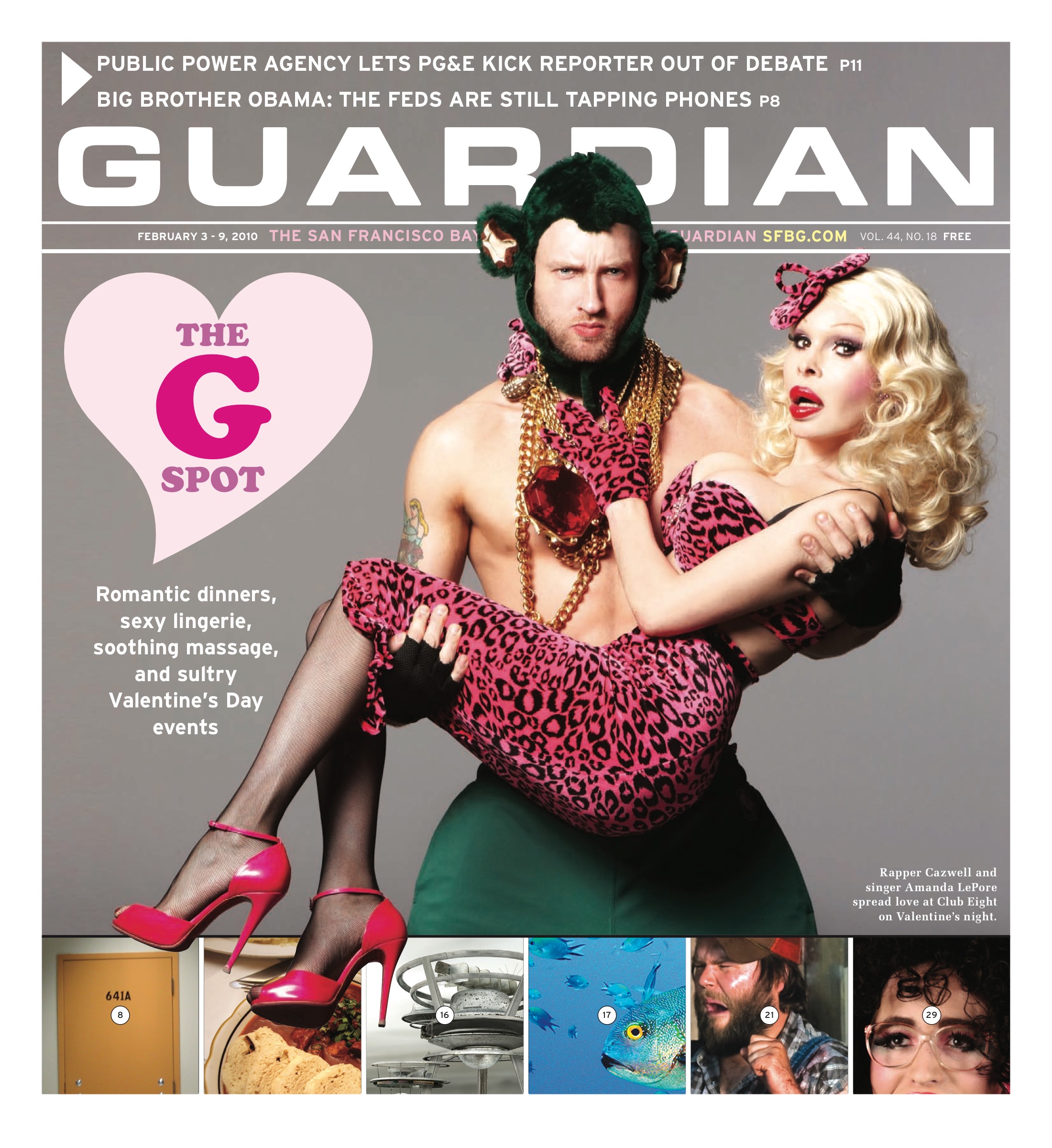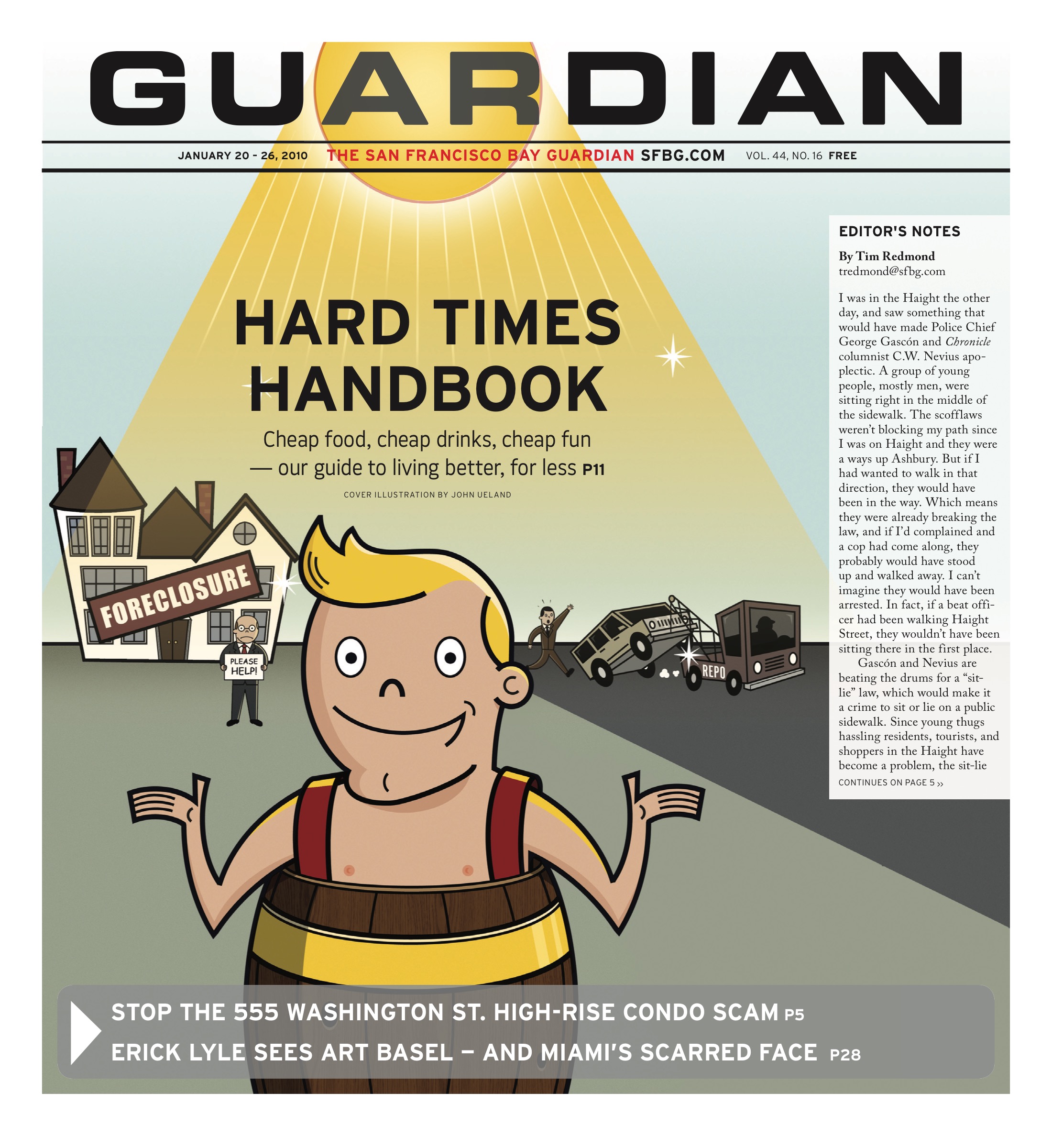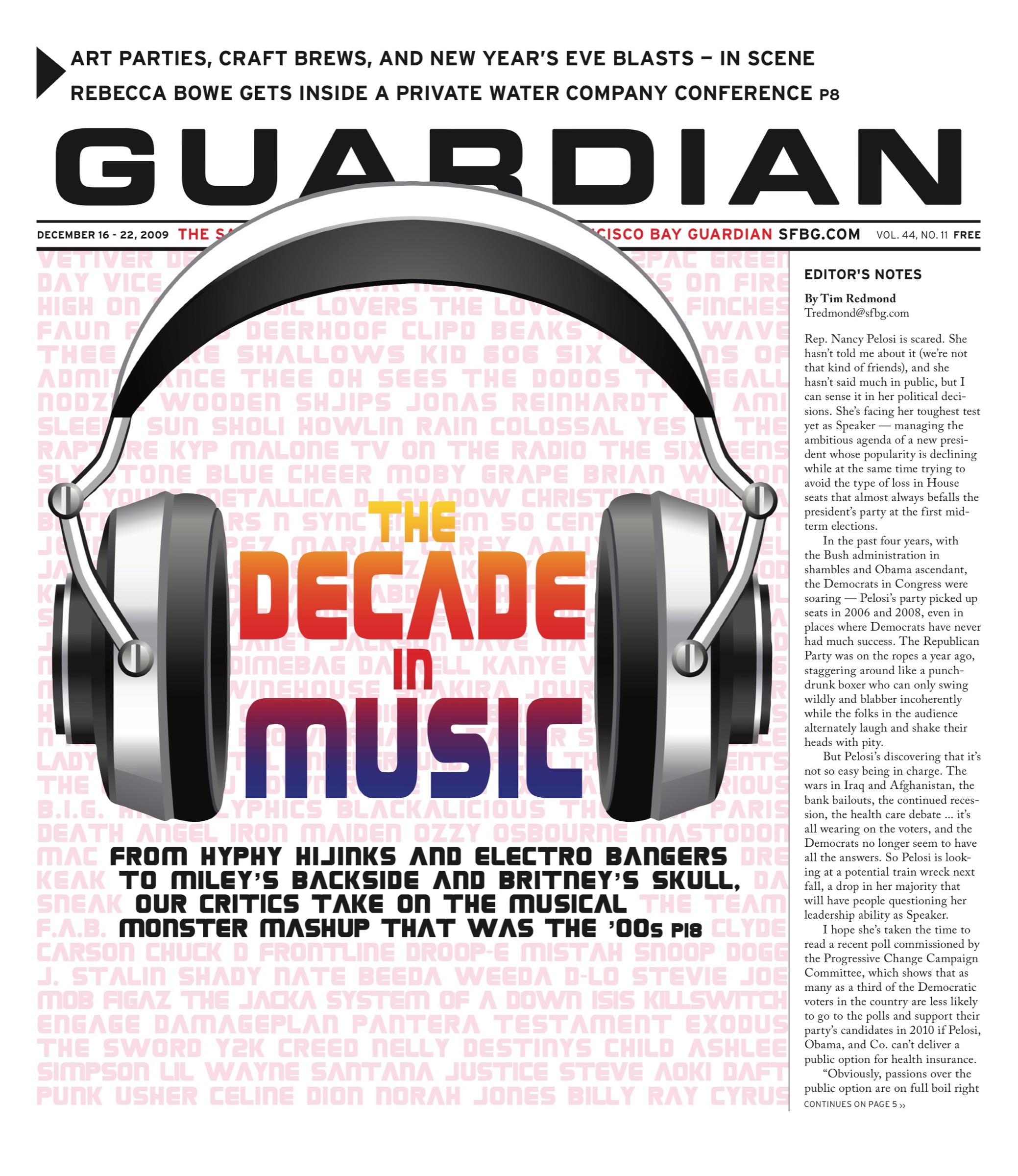arts@sfbg.com
Coldcut used to brag that it was “Ahead of Our Time.” In the late 1980s, they slapped the phrase onto a host of groundbreaking forays into cut-and-past sound mathematics like “Beats + Pieces,” “Doctorin’ the House,” and “Stop This Crazy Thing,” freewheeling tunes that treated the history of sound as an enormous candy shop, copyright laws be damned.
And now? Coldcut’s long-running company Ninja Tune reflects the musical times in all its heterogeneous subgenres and variations on familiar themes. When Matt Black and Jonathan More launched Ninja Tune in 1990, it was to create an outlet for the group’s abiding passion in instrumental beats (which the British press would soon garnish with colorful nicknames like “trip-hop” and “sampledelia”). It was built on Coldcut-related productions like DJ Food’s Jazz Brakes series and Bogus Order’s Zen Brakes. Over time, the label flowered into a major indie with two sublabels (Counter and Big Dada) and dozens of artists passing through its doors, from Amon Tobin and Roots Manuva to Antibalas and Mr. Scruff. Today, it releases iconoclastic statements from the L.A. beat scene (Daedelus), the Baltimore indie/electro scene (Spank Rock and the Death Set), and London’s grime and bass worlds (the Bug).
During a phone interview from London, Coldcut’s Black says, “All the artists on the label have their own character. It’s like a collection of audibles, really. There’s a consistency in the fact that we’re all quite out there.” He adds that Ninja Tune is more “advanced” than it was in its first decade, when most of the roster — including production units like the Herbaliser and Funki Porcini — fit under the “trip-hop” rubric. “I felt that some of the early releases interpreted the Coldcut blueprint too literally, just getting some funky loops and sounds and stringing it out for a bit.” Part of this is due to maturity. The Herbaliser, for example, began making beat “loops” for discerning headz but has since grown into a full-fledged band. Even DJ Food, which now solely consists of producer Strictly Kev, has become a purveyor of soundtrack music inspired as much by David Axelrod as Marley Marl.
The mutating Ninja Tune amoeba is being chronicled through a series of 20th anniversary promotions. The deluxe box set Ninja Tune XX includes a hardcover book, six CDs, and six 7-inch vinyl records. The book, Ninja Tune: 20 Years of Beats & Pieces (Black Dog Publishing, 1992 pages, $29.95), is also available separately as a paperback. “If you look at the arrangements and the musicality on the music on the XX set, it’s a lot more advanced than it was a few years ago,” says Black, pointing to San Francisco’s Brendan “Eskmo” Angelides as an example.
Eskmo isn’t the first Bay Area artist to record for Ninja Tune; that honor belongs to rap experimentalist cLOUDDEAD, which released the U.K. edition of its 2001 self-titled album through Big Dada. However, he gives Ninja Tune a foothold in the thriving bass and organic electronic music scene through the symphonic boom of tracks like “Hypercolor.” Eskmo says that signing with Ninja Tune, which just released his self-titled debut, has been “really inspirational,” adding, “It’s a unique thing in this day and age for an independent to be flourishing and still put out creative stuff.”
According to Stevie Chick’s book 20 Years of Beats & Pieces, Ninja Tune emerged in the wake of the music industry’s brief yet disillusioning courtship of Coldcut, who dazzled with a game-changing remix of Eric B. & Rakim’s “Paid In Full” (the classic “Seven Minutes of Madness” mix) and U.K. pop hits like Yazz’ “The Only Way Is Up” and Queen Latifah’s “Find a Way.” The label began as Coldcut’s middle finger to demands that they become another group of pop-dance hacks like Stock Aitken Waterman. “We really liked making instrumental hip-hop, fucking around, not having to make another ‘pop’ track,” Black tells author Chick. On albums such as 1997’s Let Us Play, Coldcut found an equilibrium between advocating the wonders of cutting-edge technology and vinyl consumption and promoting anticapitalist themes.
An inevitable byproduct of Ninja Tune’s success (as well as that of its great rival, Warp Records) is that its fashion-forward yet radical communal lifestyle seems more myth than reality. In 2005, the label released Amon Tobin’s soundtrack for the Ubisoft video game Splinter Cell: Chaos Theory. Last year, Speech Debelle won the U.K. Mercury Prize for her Speech Therapy debut. A few months later, the British rapper announced that she wanted off the Big Dada label because it didn’t promote her work enough. Meanwhile, several roster artists have scored popular car commercials, from Mr. Scruff’s “Get a Move On” for the Lincoln Navigator to the Heavy’s “How You Like Me Now?” for KIA Sorento minivans.
“We’ve adapted our game,” Black explains. “We’ve got a company called Sync, Inc. and they specialize in getting sync licenses or getting our music placed in films, TV, video games, and adverts. That’s become an important part of our business.” When asked if that contradicts Coldcut’s earlier independent philosophy, he answers, “We give our artists a lot of freedom. If an artist wants to license a track to Coca-Cola, we wouldn’t necessarily block them. Coldcut has turned down a lot of syncs, particularly car ads, ever since we did one for Ford and realized that was a terrible idea.” Ironically, the song used was “Timber,” an instrumental decrying the eradication of rain forests. Even though Coldcut gave half of the licensing money to Greenpeace, says Black, “We didn’t feel comfortable with it.”
Two decades on, Ninja Tune continues to weather the rapid changes of the music industry while sustaining Coldcut’s dream of an independent haven for progressive artists. But the future ain’t free. “I believe the corporations are the Nazis of our age,” Black says. “But you sometimes have to talk to the Nazis because they’re a reality.”
NINJATUNE XX
With Amon Tobin, Kid Koala, DJ Food and DK, Toddla T and Serocee, Dj Kentaro, Eskmo, Ghostbeard, An-Ten-Nae, Motion Potion
Fri/29, 9 p.m.-4 a.m.; free with rsvp
1015 Folsom
103 Harriet, SF

